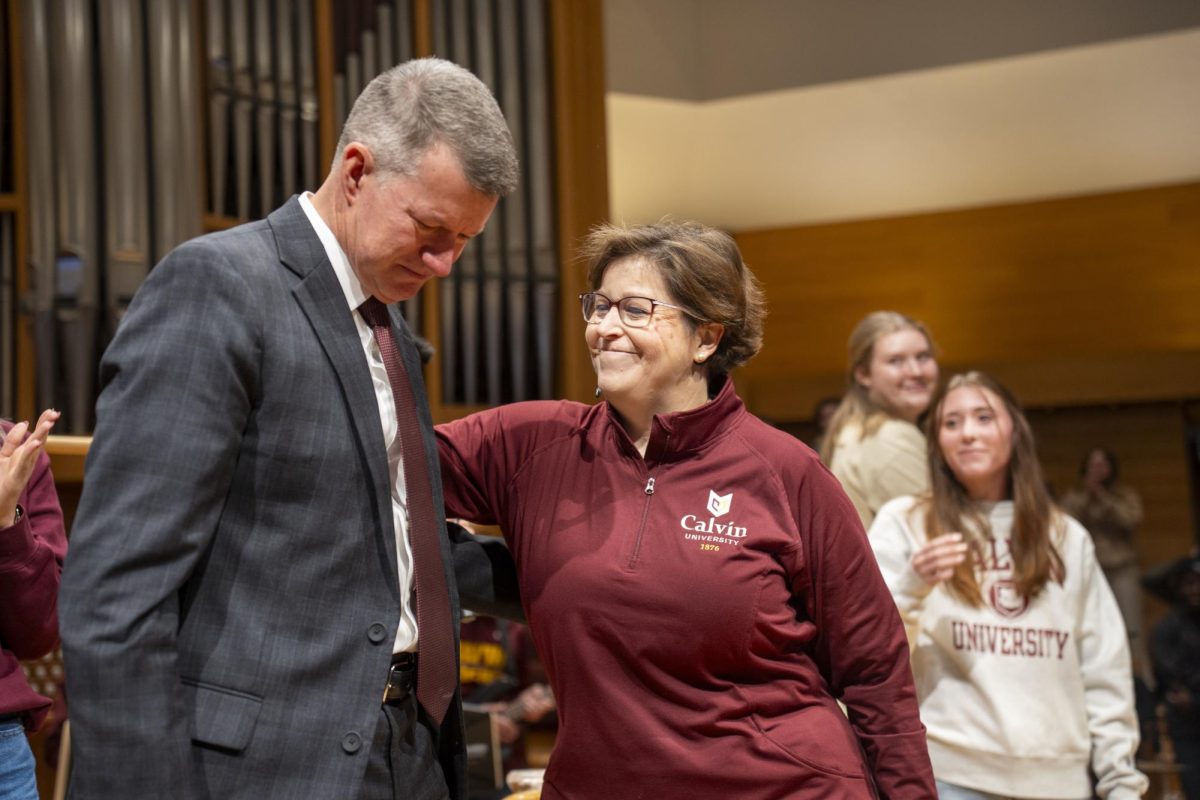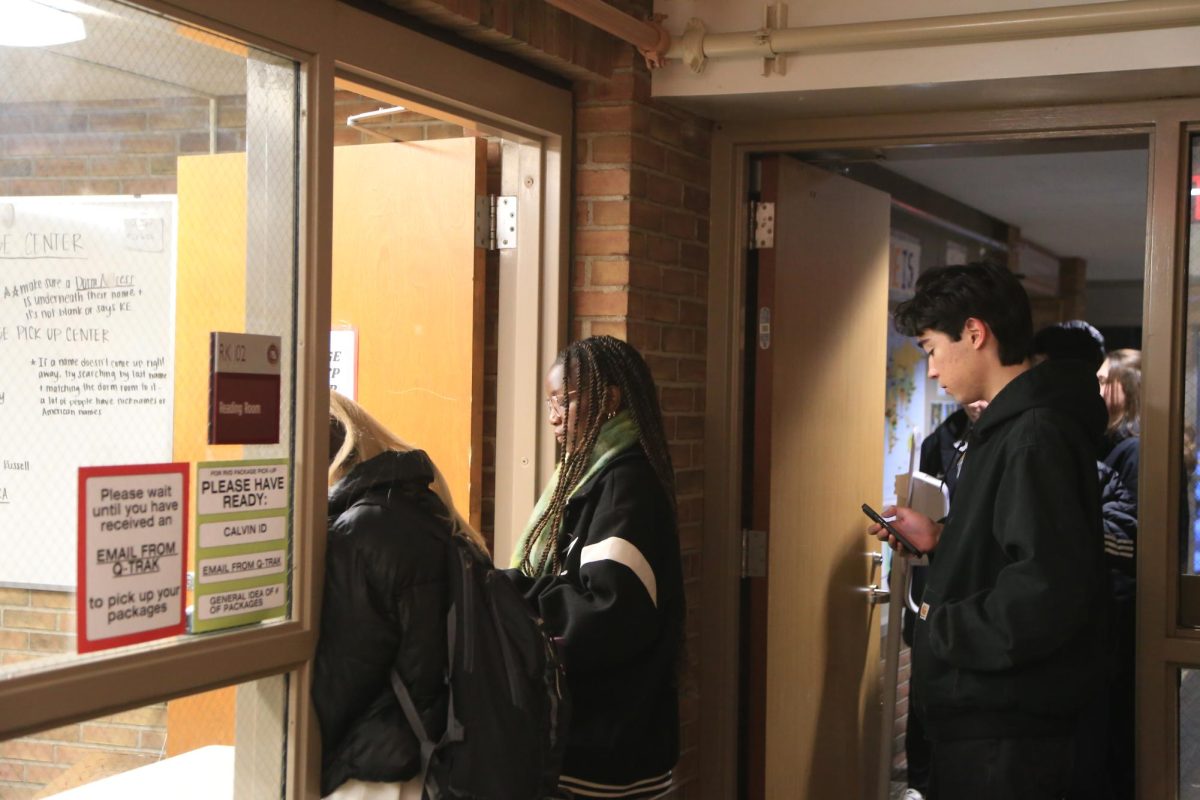The Calvin Theatre Company (CTC) presents an original version of “King Lear” the next two weekends. Director Stephanie Sandberg adapted the classic Shakespeare tragedy with traditional white clown actors who discover the play and perform it out of necessity.
“Every culture in the world has clowns of some kind … so they are kind of eternal, an eternal art form. The existential clown is a figure that comically experiences the universe, turns suffering into laughter, turns difficulty into meaning,” Sandberg said.
The white clown originates in French culture and has origins in the middle ages. It is known as the “classic clown.”
Sandberg wanted to explore what she considers to be Shakespeare’s most difficult play in terms of suffering. The world seems to crash down in “King Lear.”
“Clowns are a metaphor for the human experience. We find ourselves having to laugh at our own suffering in order to understand it sometimes. … We can’t move on in the universe until we begin to understand our own suffering, and we can do this through telling stories as much as through experience. So that is why the clowns discover ‘King Lear.’ They don’t have a choice; they have to perform it.”
Sandberg related this concept to difficult poetry, music, art and films depicting suffering that people watch.
“Why do we put ourselves through that over and over again?” she asked. “Because we’re the clown! We have to deal that. We are just drawn to it.”
This concept has provided a unique and challenging job to all other aspects of the show including costumes, set design and acting. CTC has staff that work specifically on these elements for shows.
Amanda Ytzen, the costume designer for Calvin productions, found the vision to be a challenge as it combined a ranging set of aesthetics such as silent film, Keaton and Renaissance.
“The costumes were inspired by lots of images, but it didn’t all logically fit together so it has been gratifying to see it all come together,” she said.
Ytzen has also enjoyed seeing the actors’ excitement when they see their costume and come in for fittings. She thinks the costumes will “resonate with students and other things they’ve seen.”
The concept of a play within a play has also provided a challenge for costume design as the clown costumes will be covered with King Lear costumes throughout the performance. Ytzen designed the costumes in a way to keep the white clown theme alive throughout the play.
“This is a play within a play: actors as clowns performing Shakespeare done through the lens of what it is to be a clown. [Because of this] I make sure that Lear costumes don’t cover up the clown costumes so that the white comes through.”
The costumes also add a playful element to a heavy show. Keeping the white visible and using the costumes to bring laughs “allow the audience to connect with the tragedy.”
Stage manager Carlie Bergsma also expressed excitement at seeing the show come together. As the manager of information for such a unique show, she needed to be flexible throughout the “ever-morphing show.”
“Part of the fun was you never know what will be added next. You have an idea at the beginning and realize that something else may be better.”
For example, a challenge was presented with a couple hanging scenes found in “Lear” with how to show the hanging in a way that visually adds to the show but also is logistically possible. The solution was to pre-film the silhouette and project it during the show.
Steve Haase, the CTC technical director who designed the sets, seconded the adaptable nature of the show.
“We had to wait until the clowns discovered who they are to figure things out,” he said. “It was discovery theater — we don’t know what we need until we get to it.”
Sandberg hopes that many students will come if only for the Shakespeare, as she believes it is essential for cultured students to have exposure to Shakespeare.
Bergsma highlighted the high level of student involvement in both “King Lear” and every other CTC production. She hopes students will come to support their classmates and the arts at Calvin in times where the arts are experiencing cuts.
“So much work has been put into every aspect,” she said. “Part of being a community is that you’re like a big family and want to support what everyone does.”
CORRECTION: Professor David Leugs designed the sets. Steve Haase built the sets and designed the lighting.








